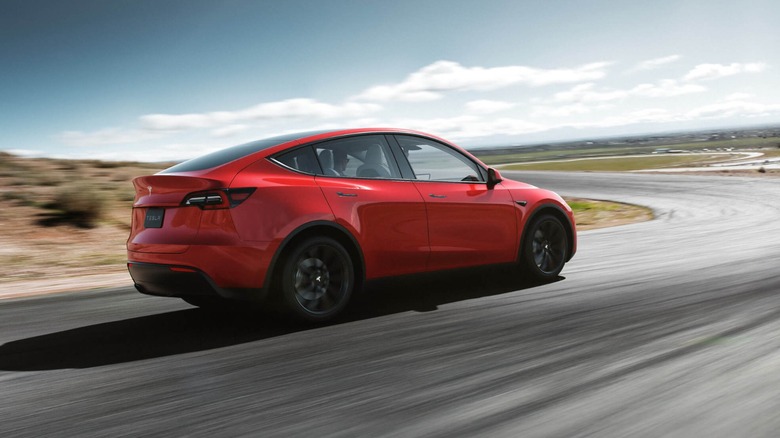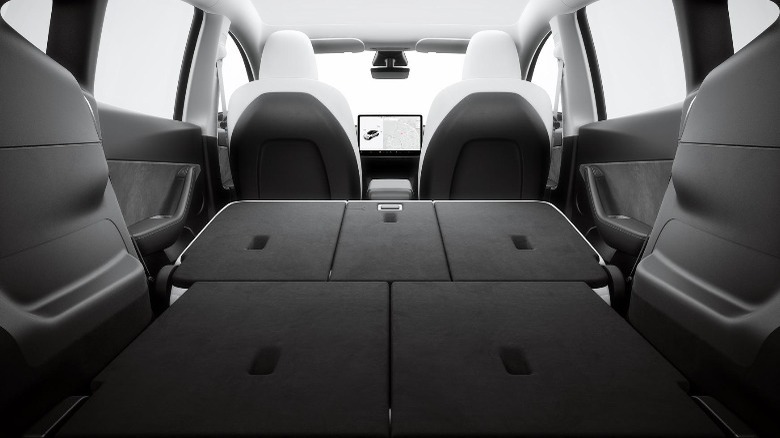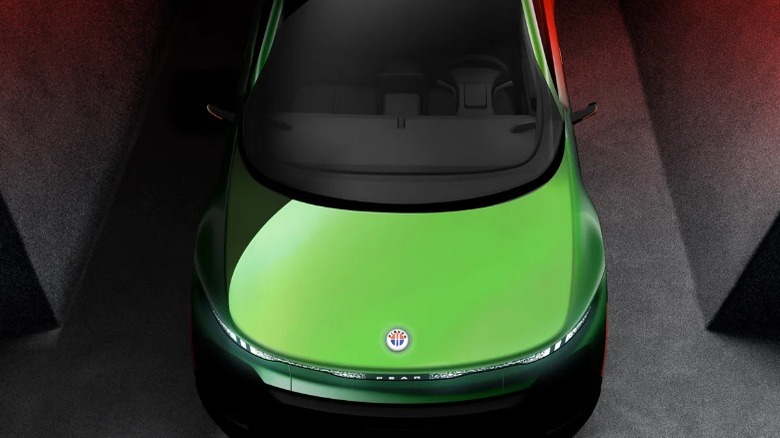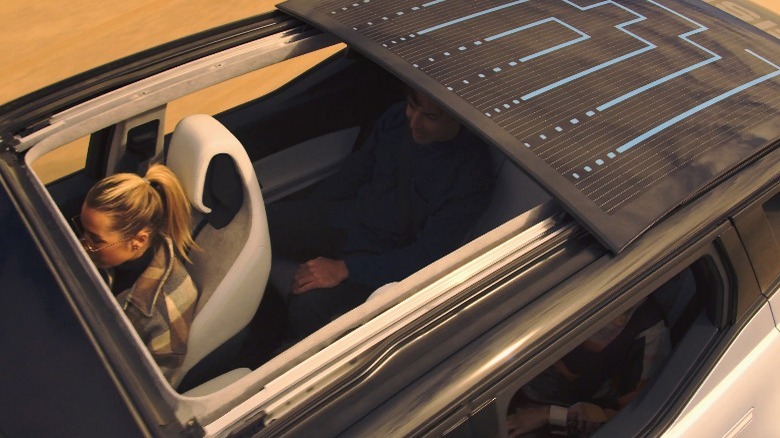Tesla Model Y Vs Fisker Pear: Who Will Own The Electric SUV Market?
The market for electric vehicles is growing in a way it never has before, and while the incumbents in the industry are catching up, it's the newcomers who have led the charge. Much of the push for electric vehicles has fallen on the shoulders of Tesla, a company founded in 2003, that has a laser focus on electric vehicles. In recent years, Tesla's competition has come from two sides — the established automakers slowly pivoting their assembly lines to electric, like cumbersome barges in a crowded harbor, and the other newcomers hoping to ride the electric wave to automotive stardom.
The luxury crossover SUV is an almost perfect platform for a new company to target. It lacks the high-performance demands of the sports sedan consumer while providing the manufacturer with a large enough platform to easily package more battery capacity and motors and appeal to one of the largest automotive audiences around.
Tesla Model Y
The Tesla Model Y is one of Tesla's biggest successes, with over 411,000 units sold globally in 2021 alone, according to Statista. What's more, further statistics from Statista show that the Model Y became the best-selling plug-in EV in the U.S. in 2021. The commercial success of Tesla's premium vehicles is no doubt a major motivating factor for other automakers to dip their toes into EV manufacturing.
With a price tag of $65,990, the Model Y certainly isn't cheap, but the vehicle's high-performance, AWD, dual-motor drive train, 330-mile range, and excellent five-star NHTSA safety rating certainly warrant at least some of the high price tag. It's also difficult to argue with Tesla's Supercharger network, even though the company recently opened it up to other vehicles to use. Reaching 60 mph is handled by the Model Y in around 4.8 seconds, which is more than respectable for a crossover SUV, and with up to seven seats and 76 cubic feet of cargo space, the Model Y strikes a reasonable balance of comfort, practicality, and performance.
Being a crossover SUV, though, means that potential buyers of the Model Y could be cross-shopping it with more than one other vehicle class. If you want more cargo space, it's easy to justify going up to a bigger vehicle, like the Volvo EX90. Meanwhile, those who are willing to sacrifice a bit of range and performance could probably be swayed by something cheaper, like the $39,700 Hyundai Ioniq 5.
The Fisker PEAR
[12/23/22 - Updated with platform information]
With the stated goal of 250,000 annual sales, the Fisker PEAR (short for Personal Electric Automotive Revolution) is a small electric crossover that is aimed squarely at the lower-end segment of the market Chevrolet targets with vehicles like the Bolt EUV. Slated to enter production in Q4 2022 in collaboration with Foxconn, Fisker aims to release the PEAR in 2024.
Both companies have been playing details on the architecture that the PEAR will use close to their respective chests. In fact, details about the EV are in very short supply. One thing Fisker is clear about, though, is that the platform for the PEAR will be 100% a Fisker design.
That's despite the prior work on electric vehicles that Foxconn has already done independently. Foxtron — Foxconn's automotive wing — has already unveiled its own Model C vehicle, a similarly-sized compact electric crossover; that's said to be able to do 0-60 mph in around 3.8 seconds, and be capable of traveling around 400 miles on a charge. Performance figures for the PEAR have not been made public, but according to Fiskerati the electric SUV will be offered in both AWD and RWD configurations.
Goals and projected sales tell a story where specs can't yet
Despite teasing the Pear on numerous occasions, Fisker has been frustratingly closed-lipped about the upcoming automobile which makes it difficult to compare the vehicle directly to the Tesla. What little we do know for certain is that it will be a compact five-seater crossover hatchback that is set to launch in 2024 at a starting price of $29,900, which is less than half the price of the Model Y. Fisker has said that it plans to quickly ramp up production to 250,000 units per year after the vehicle's release. Generally, vehicle manufacturers plan production capacity based on market research, and if the recent disparity in vehicle supply and demand continues, it's reasonable to assume Fisker will sell that many units per year, especially at that price.
If Chevrolet's Bolt EV sales numbers are anything to go by, being affordable isn't all there is to an EV. According to GM Authority, Chevrolet only sold 22,073 units of the Bolt EV in the U.S. in 2021, falling drastically short of the Tesla Model Y's 2021 U.S. sales figures, which reached 161,529 units, according to Carsalebase.com. If Fisker wants to get a leg-up over the Tesla Model Y, it will need to do more than just be cheap. Fisker's production goal of 250,000 units shipped globally per year is no doubt based on research, which is only just over half the current sales numbers of the Model Y.
Fisker's appeal to a younger audience may be the key
Fisker's vision of the PEAR as a versatile vehicle meant for a younger audience may be a double-edged sword. As it stands, according to Autoblog, 70% of Tesla owners are under 34 years old. Where Fisker is likely to succeed in its approach with the PEAR is the pricing. While Tesla owners in the U.S. have an average median household income of $85,000, the average median household income for people between 25 and 34 in 2021 is only $74,862, with that number coming down to $51,645 for people between 15 and 24 years, according to Statista. The PEAR's planned launch price of $29,900 means it will be more affordable to more people.
Fisker's other problem may be its newcomer status, but that may be less of a problem in the younger generation, who either can't afford to be concerned about brand loyalty or simply don't care. According to Agility PR Solutions, Gen Z and young millennials are more concerned about value than brand loyalty. This trend away from brand loyalty may also explain why a disproportionate number of Tesla — a very new auto company with a bit of a sordid history — owners are under 34 years of age.
If Fisker can offer a decent value proposition — perhaps packing in some of the innovative features from its Ocean SUV — in its PEAR city crossover, it may just be able to captivate a price-conscious audience that has thus far evaded Tesla.



